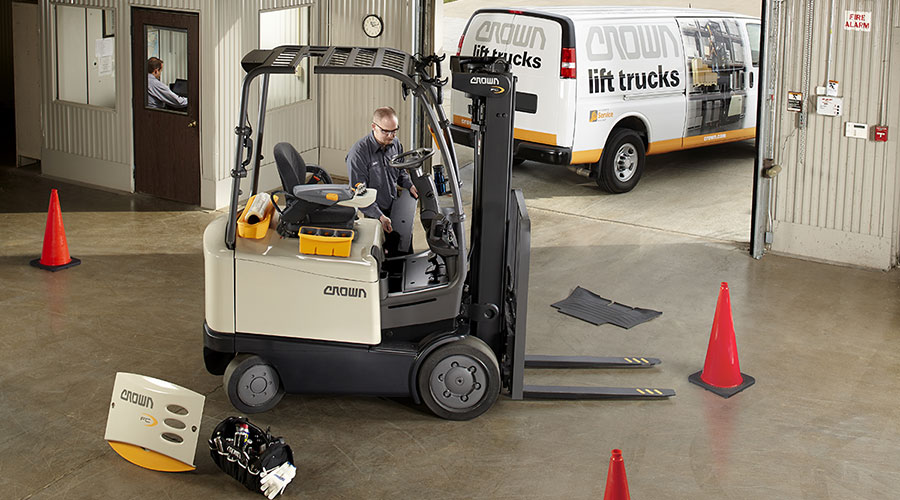Avoid the Chaos: Bring Clarity and Certainty to your Forklift Maintenance Program

In today’s fast-moving environment, despite our best efforts, life can be random, unpredictable and even chaotic. While some people thrive on chaos, most of us prefer as much predictability, routine and structure as possible.
This is especially true in the warehouse, where workload demands, and the pace of change can make every day seem chaotic. Fortunately, with the evolution of telematics systems and data analytics, companies are using forklifts as data hubs to discover information that helps them strive for consistency while realizing significant productivity and efficiency gains.
Telematics systems, like Crown’s InfoLink® operator and fleet management system, are designed to gather operational data, such as vehicle location, operator behavior and vehicle event codes and activity. Users can analyze the information to better understand how forklifts are utilized and make informed decisions about the health of their forklift fleet and bring more clarity to their forklift maintenance program.
Lift Truck Health: What does it mean and what can it do?
Some companies can struggle with the unpredictable nature of forklift service and maintenance. One cannot plan for unforeseen service issues. Often, by the time issues are identified, the lift truck is down, service is required, and productivity suffers. Fortunately, telematics systems collect a wealth of data on the health, performance and status of forklifts and batteries that can help identify issues before they affect operations.
In part, lift truck health can be defined by the amount of time a vehicle operates without generating a significant event code. When defining lift truck health, it is important to include the elapsed time between the initial detection of a significant event code and the point at which the event code is resolved.
While the triggering of event codes does not always result in shutting down the lift truck, a less healthy lift truck is more likely to experience downtime. This also affects lift truck health in that the vehicle is unavailable to be used and/or not communicating with the telematics system. Another factor affecting lift truck health can be how long the service issue goes unnoticed or unreported, which delays the service call and a resolution for the issue.
Proven Predictability Increases Uptime
Reducing the time between the occurrence of an event code and its resolution contributes to a higher health rate and a healthier lift truck. A healthier lift truck fleet results in more uptime, greater productivity and more clarity and predictability regarding the fleet’s service requirements.
How do we know? Analysis of years of telematics data comparing lift truck health before and after the implementation of connected maintenance have documented improvements of more than a 20% in lift truck health and with it, an increase in the amount of time the forklift operates without generating an alert.
As are most instances when people improve what they measure, there is a significant reduction in event codes when they are actively monitored and then acted upon. Alerts from monitored forklifts are reported more quickly and underlying issues are addressed. Users who monitor mean time to repair (MTTR) have also confirmed this improvement in response and resolution.
The level of clarity and predictability in your forklift service program will only increase as telematics systems and data analytics continue to mature, and machine learning and predictive maintenance begin to inform your service requirements. In the meantime, telematics and connected maintenance can actually help avoid some of the chaos in your day-to-day operations and enable your warehouse to plan and perform with more certainty than ever before.